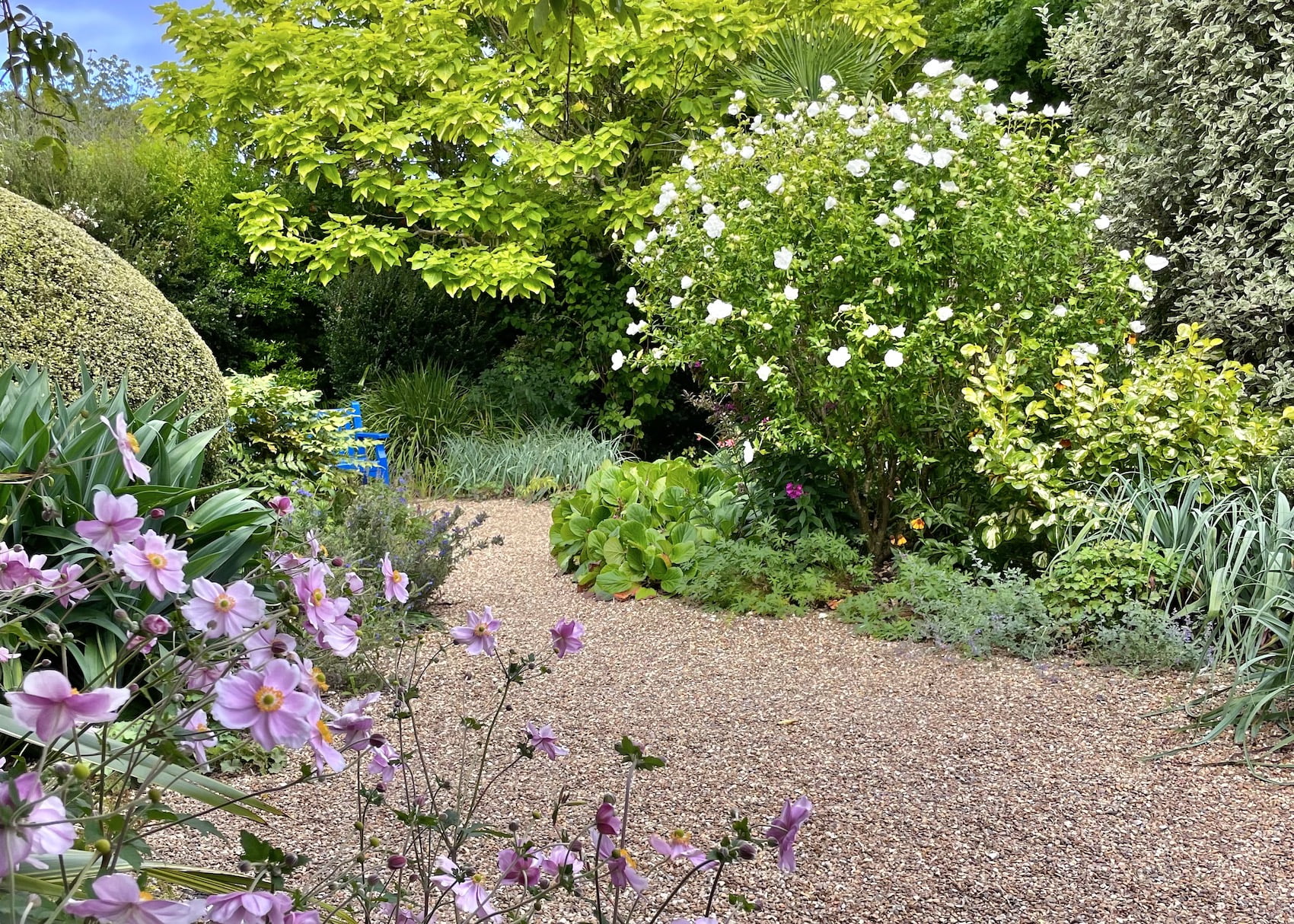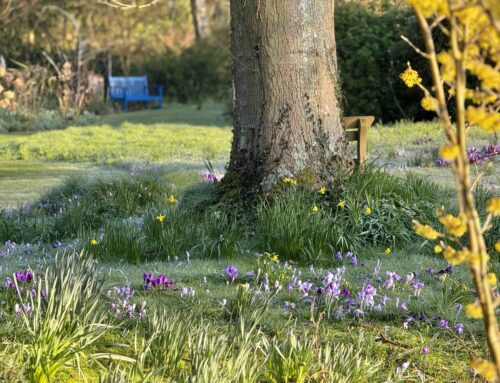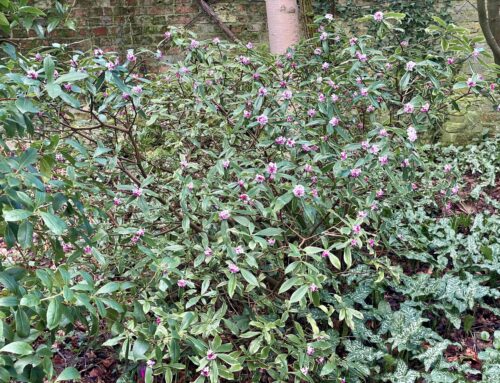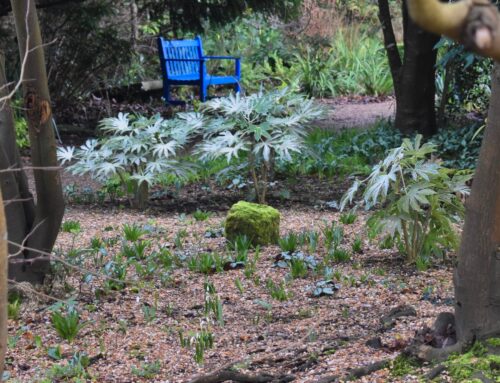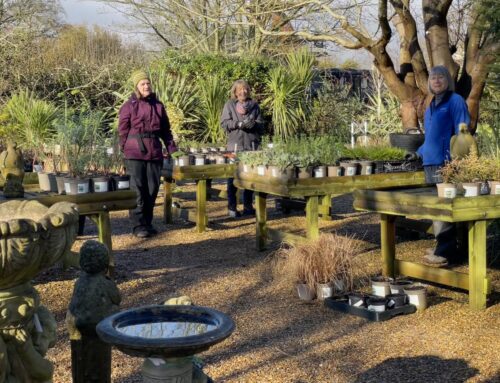Above: A white Rose of Sharon graces the north end of the Walled Garden.
September Plant of the Month: Rose of Sharon
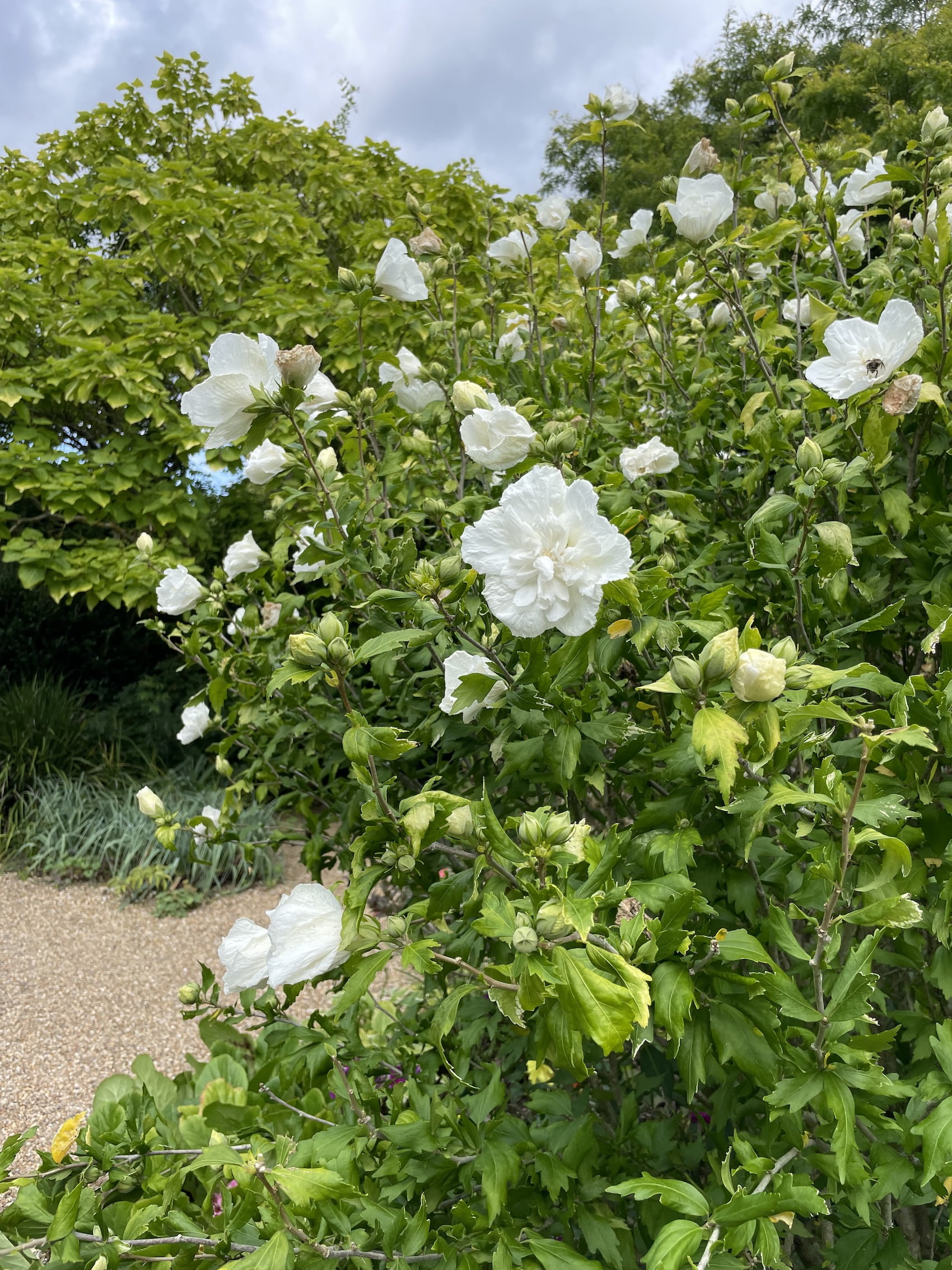
A pure white Rose of Sharon on a bright September morning.
On the north end of the Walled Garden here at Denmans Garden grows a tall Rose of Sharon (Hibiscus syriacus) with gorgeous white, ruffly flowers that began blooming in late July. It will continue to bloom well into Autumn before its leaves take on their yellow Autumn colour and drop as winter sets in. Though the Rose of Sharon leafs out relatively late in spring, its seed pods and light brown twiggy structure will provide winter interest for the frosty months.
A second specimen that is wider and older grows in the Conservatory. It has smaller flowers, lavender pink with a deep fuschia centre, that fade to blue before dropping. In fact, the Rose of Sharon comes in a variety of colours, from white to blue to pink and combinations of colours as well. Depending on the variety, the flowers can either be single or double, with beautiful round buds that contrast in shape to the elegant, slightly blousy blossoms and jagged leaves.
An elegant deciduous shrub that grows to a height of about 6 to 10 feet with a spread of up to 4 to 6 feet, the Rose of Sharon is drought tolerant and thrives in full sun to partial shade (flowering best in sunny locations) and well-drained soil. Unlike its more tender cousins, this hibiscus is hardy to -15 C (5 F). It is reasonably pest-free, deer resistant, and tolerates urban conditions well, so can interest to different types of gardens. Adding to its virtues, it attracts butterflies and bees, so enhances the garden’s biodiversity.
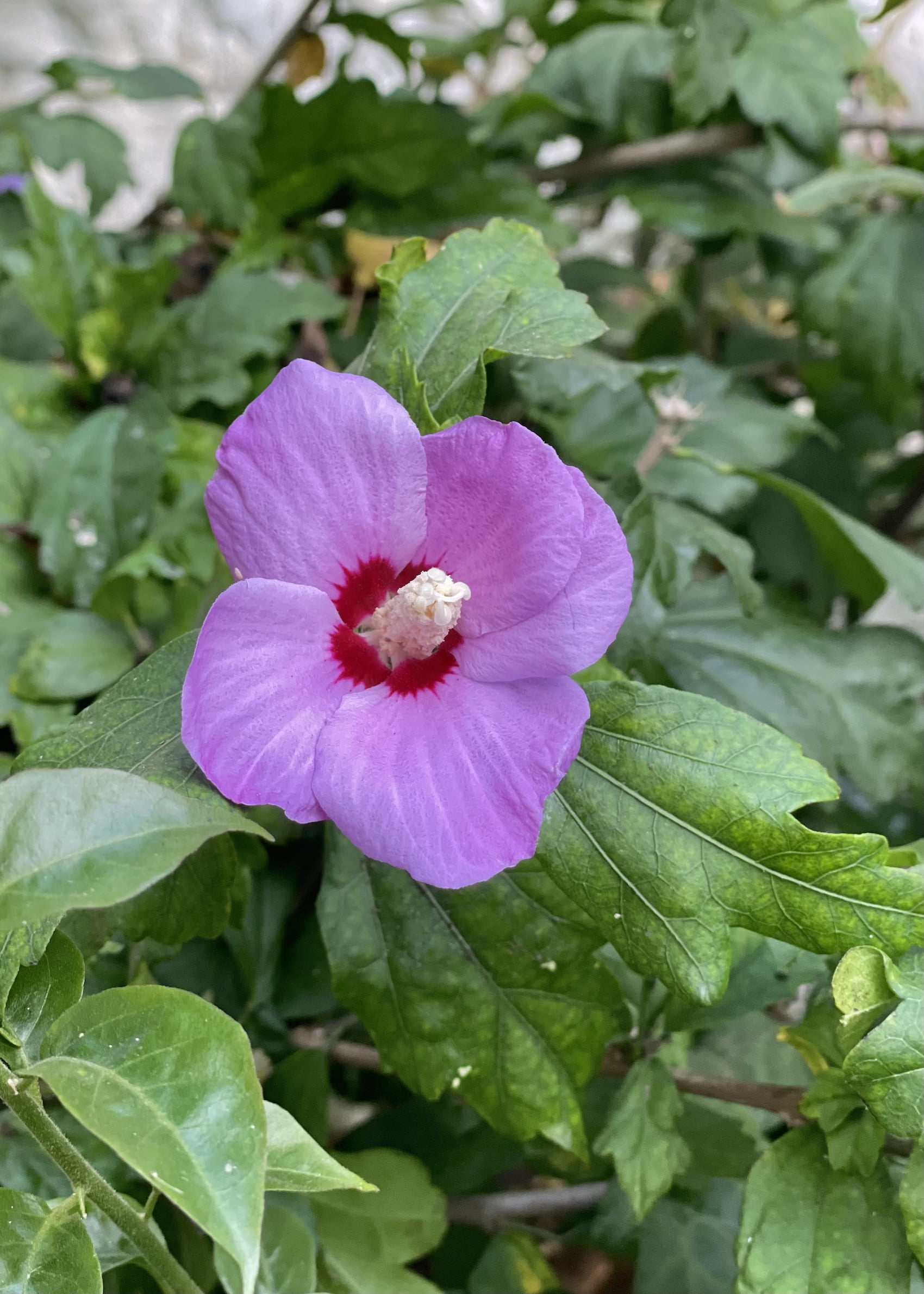
The Rose of Sharon that grows in the Conservatory.
It can be planted en masse or as a hedge, but in smaller gardens like our Walled Garden, the Rose of Sharon should be grown as a single specimen where it can serve as a graceful focal point. Typically, vase-shaped and multi-stemmed, it can be grown as a multi-trunked shrub, single-stem small tree or espaliered against a wall.
Named in the 1700s by the ‘father of taxonomy’, Carl Linnaeus, the shrub’s genus name, hibiscus, is an old Greek and Latin word for ‘mallow’, and the specific epithet (the second part of a plant’s Latin name indicating its species) suggests it is from Syria which it most definitely is not. Instead, the Rose of Sharon is a native of China, Japan, and East Asia, and is the national flower of South Korea where it also appears on several national emblems including South Koran banknotes. Other common names are Althea or Chinese hibiscus.

